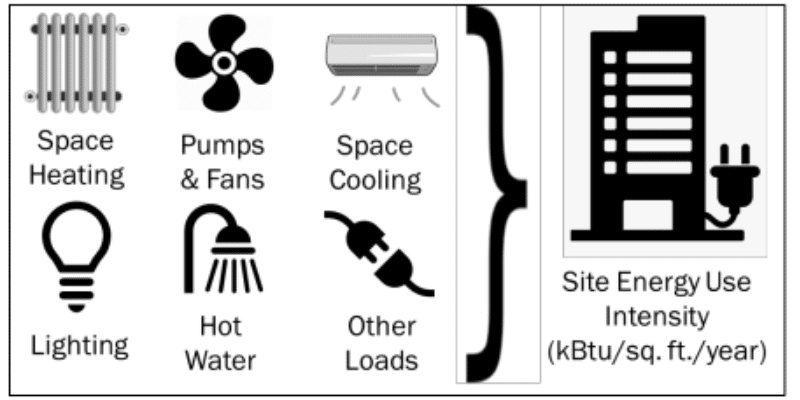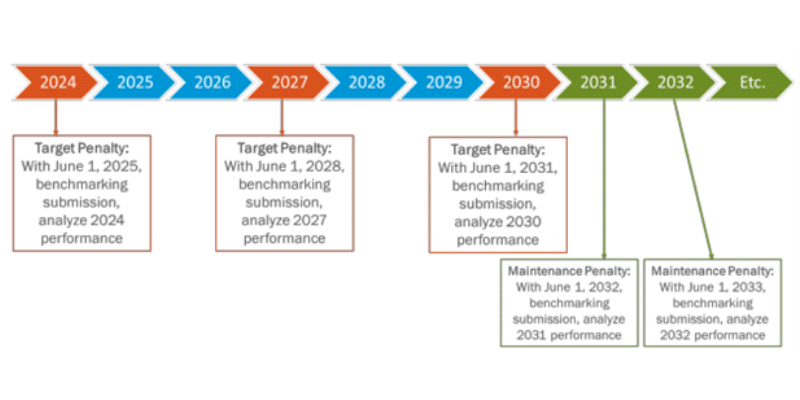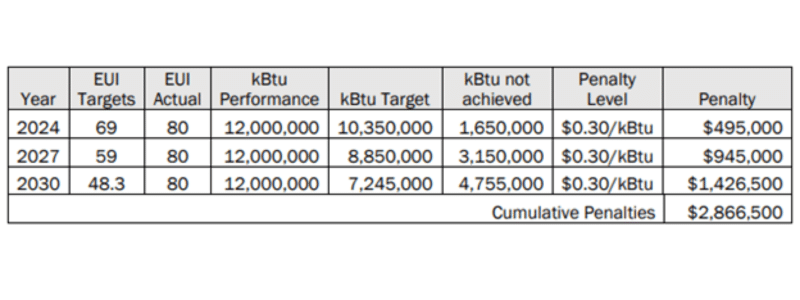WHAT IS ENERGIZE DENVER?
BENCHMARKING FOR COMMERCIAL BUILDINGS 25,000 SF & LARGER
In July of 2020, the City and County of Denver created the Climate Action, Sustainability and Resiliency (CASR) agency. In collaboration with the City and County of Denver’s other departments, other units of government, and community partners, this agency was created to manage the city’s ambitious emission reduction goals and sustainability programs. The agency’s office ensures that the city’s targets are aligned with current climate science, promotes the role that climate action and sustainability play in strengthening Denver’s economic vitality and a prosperous future for all residents and businesses, and embraces equity as a value and practice across all of its work.
As part of the CASR, in November of 2020, Denver voters approved Ballot Measure 2A, the Climate Protection Fund. The fund was created to raise approximately $40 million per year dedicated to climate action in the City and County of Denver, Colorado. Based on recommendations of the Denver Climate Action Task Force, the Climate Protection Fund was created to help eliminate 100% of greenhouse gas (GHG) emissions by 2040.
In order to accomplish this goal, the CASR created numerous citywide efforts, including the Energize Denver legislation, enacted in November of 2022. The Office of CASR and the Energize Denver Task Force was tasked with helping the City of Denver design a building performance policy for existing buildings that improves health and equity, creates jobs, and drives climate solutions in existing buildings to achieve net zero energy by 2040. Translating this goal into cumulative GHG emission reductions results in 13.7 million metric tons of CO2 saved between now and 2040. The existing buildings included all commercial and multifamily buildings, as well as manufacturing, agriculture, and industrial uses.
Although Denver requires all commercial and multifamily buildings to adhere to certain regulations, the focus of this information is on buildings 25,000 square feet (SF) or larger. The Energize Denver Ordinance requires all buildings 25,000 and larger to:
- Submit annual benchmarking of the building’s energy use.
- Meet energy performance requirements based on the building’s Energy Use Intensity (EUI).
- Electrify when replacing space and water heating equipment.
- Install a cool roof or meet other compliance options when replacing a roof.
Benchmarking and its Importance within the Energize Denver Ordinance
Benchmarking is the foundation for building performance standards. In order to measure performance of the policy, CASR must receive complete and accurate benchmarking reports that include correct square footage, breakdown of space use types, and energy use data. For the benchmarking reports in the calendar years 2024, 2027, and 2030, third party data verification will be required to be submitted within the benchmarking report submission (City and County of Denver, 11). Third party verification allows for an independent review of the property’s energy data submission.
Building owners, managers or their consultants must benchmark their building’s energy usage annually using the U.S. Environmental Protection Agency (EPA) ENERGY STAR Portfolio Manager (ESPM) tool, and by June 1 each year, must accurately report energy performance information to CASR for the previous calendar year.
In order to accurately benchmark, data verification must be completed by generating a Data Verification Checklist within ENERGY STAR Portfolio Manager, following the ESPM directions, and having a third-party verifier confirm the information. Data verification does not require an on-site visit, but it is up to the verifier if they feel confident enough to sign the documents without an on-site visit.
The data verifier must be a third party with one of the following licenses, credentials, or certifications, and are in good standing with the authorization organization:
- Professional Engineer (PE) issued within the United States;
- Registered Architect (RA) issued within the US;
- Certified Energy Manager (CEM from AEE);
- Building Energy Assessment Professional (BEAP from ASHRAE);
- Energy Management Professional (EMP from EMA);
- Any other additional data verifier license or training program credentials recognized by CASR and posted to its website (City and County of Denver, 11).
A data verifier can NOT be:
- The building owner or an employee of the building owner; or
- The building owner’s designee, or an employee of that designee, who prepares or submits benchmarking information in Portfolio Manager (for example, if the building owner hires a company to complete the benchmarking submission, an employee of that company cannot be the third-party data verifier. But that company could subcontract another company to serve as the verifier to make it easier for the building owner to contract this server.) (City and County of Denver, 11).
What are the Key Dates regarding Energize Denver?
Energize Denver established 2019 as a baseline to determine the EUIs for the commercial and multifamily buildings subject to the ordinance throughout Denver. Buildings with a gross floor area equal to or greater than 25,000 SF must meet energy performance targets in the calendar years 2024, 2027, and 2030. CASR established each building’s required interim targets (2024 and 2027) by drawing a straight line from the baseline EUI to the final 2030 EUI target. The final 2030 EUI targets were calculated for each building type such that 30% total normalized site energy savings across all covered buildings is achieved. To comply, each building subject to the ordinance must maintain the interim targets each subsequent year and must maintain the final energy performance target indefinitely or face a penalty. A link to the 2030 targets by building type is provided at the end of this informational piece.
What determines a Site’s EUI?
Denver is using weather-normalized site EUI as the main metric for performance targets and evaluation. Site EUI is the amount of heat and electricity consumed by a building as reflected in utility bills, divided by the gross square footage of the building (Figure 1). Site energy may be delivered to a facility in one of two forms: as primary energy, that is the raw fuel burned to create heat and electricity, such as natural gas or fuel oil; or secondary energy, that is the energy product created from a raw fuel, such as electricity purchased from the grid or heat received from a district steam system. A Site EUI metric combines units of primary energy and units of secondary energy consumed at the site and therefore does not account for losses in generation and transmission/ distribution of the secondary energy (City and County of Denver, 13).
Figure 1: Site Energy Use Intensity Diagram

(City and County of Denver, 14).
What Happens If My Building Does Not Meet the Key Target Dates?
CASR prefers that building owners invest in their buildings to reach the 2030 targets instead of paying penalties to the city and is committed to supporting building owners with their efforts and exploring the flexibility that alternate compliance options can afford. CASR claims to have structured the penalties to be slightly higher than the average cost of compliance to assist project and facility managers with getting approvals on projects with good returns from energy savings (City and County of Denver, 40).
Figure 2: Visual Representation of Minimum Penalty Schedule

For the performance requirements, there are two main types of penalties: a target penalty and a maintenance penalty.
- Target Penalty – A target penalty is assessed if the building did not reach the 2024 interim Target, 2027 Interim Target, or 2030 Target. If the building has not met the 2030 target, it will stay at the target penalty level annually assessed until the target is met.
- Maintenance Penalty – Once the building reaches its 2030 target, it would be switched over to a maintenance penalty on an annual basis for not maintaining the 2030 target indefinitely. If the building’s annual site EUI is 5% worse than the target it is supposed to be maintaining, the building would switch back to the target penalty level until the target has been achieved again (City and County of Denver, 40).
For the performance requirements, penalties are assessed by taking the “kBtu not achieved,” then multiplying it by the cost per kBtu to calculate the penalty amount.
kBtu not achieved * Cost/kBtu = $ penalty amount (City and County of Denver, 40-41).
An example of potential penalty cost is provided below as shown in Figure 3:
This example shows a building that did nothing to improve their EUI.
- Did not receive the electrification credit.
- Did not purchase or install renewables.
- Did not apply for a timeline adjustment ACO.
- Building achieved no reduction from a 2019 baseline of 80 EUI.
Figure 3: No Reductions

(City and County of Denver, 42).
What Steps Should I Take to Comply with Energize Denver?
Understanding the different steps you need to take to comply with the Energize Denver Benchmarking and Performance Requirements can be challenging; however, CASR and VERTEX suggest the following:
- Confirm Your Performance Target
- Decide on Your Strategy to Meet Your Compliance Deadline
- Double Check Your Benchmarking
- Consider an Energy Audit
- Get Inspiration and Instruction
- Learn How to Save on Your Upgrades
- Revisit the Flexibility in Compliance
(Compliance Guide).
For more information on research and regulatory development into Energize Denver, please contact Ryan M. Hanlon, M.S. (rhanlon@vertexeng.com).
References:
City and County of Denver. Energize Denver Benchmarking and Energy Performance Requirements, Buildings 25,000 Square Feet and Larger Technical Guidance. June 30, 2023.
Compliance Guide. City and County of Denver. (n.d.). https://www.denvergov.org/Government/Agencies-Departments-Offices/Agencies-Departments-Offices-Directory/Climate-Action-Sustainability-Resiliency/High-Performance-Buildings-and-Homes/Energize-Denver-Hub/Buildings-25000-sq-ft-or-Larger/Performance-Requirements-NEW/Compliance-Guide-25k.




